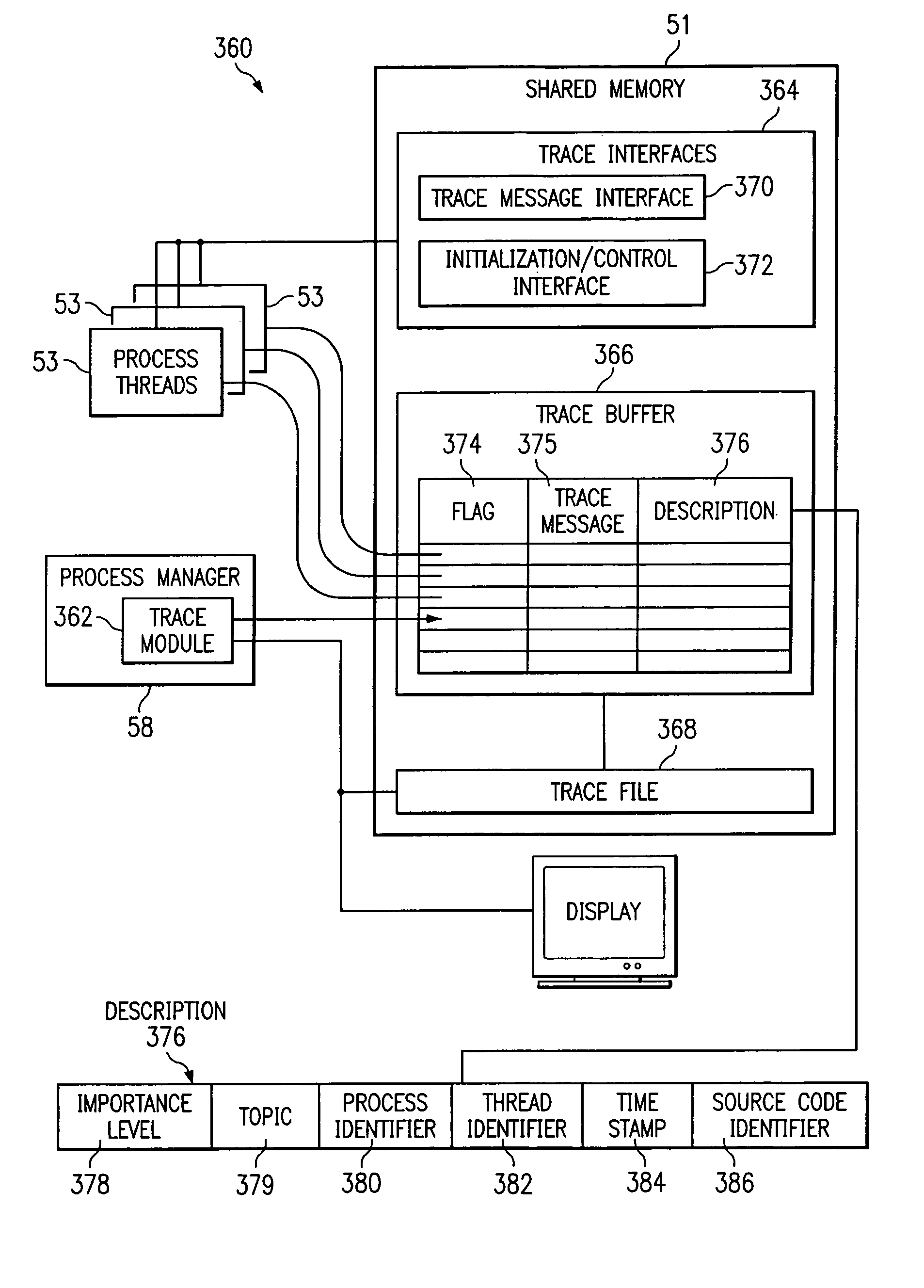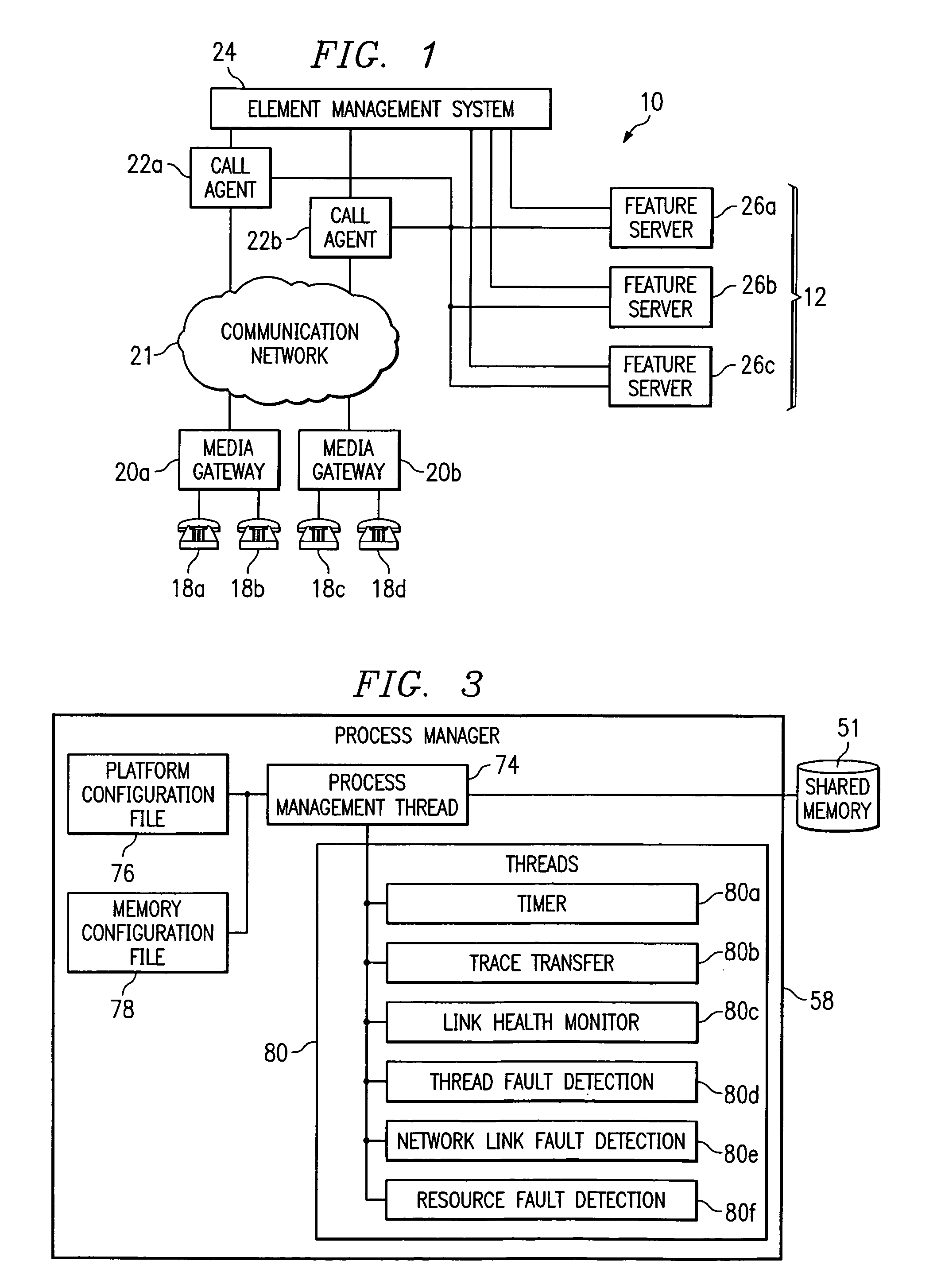Recording trace messages of processes of a network component
a network component and trace message technology, applied in the field of multi-process systems, can solve the problems that newer telecommunications architectures create challenges and opportunities for telecommunications networks, and achieve the effect of substantially reducing the disadvantages and eliminating the problems of multiple process systems
- Summary
- Abstract
- Description
- Claims
- Application Information
AI Technical Summary
Benefits of technology
Problems solved by technology
Method used
Image
Examples
Embodiment Construction
[0044]FIG. 1 is a block diagram illustrating one example of a system 10 for processing calls in a telecommunications network. System 10 may comprise, for example, a portion of a telecommunications network that includes, for example, a public switched telephone network (PSTN), an Internet Protocol (IP) network, and / or an asynchronous transfer mode (ATM) network. System 10 may provide Class 4 and Class 5 features to calls handling voice traffic over packet networks, which may allow a service provider to provide these features without a conventional Class 4 or Class 5 public switch.
[0045]Referring to FIG. 1, system 10 includes telecommunications devices 18 coupled to media gateways 20, which are coupled to call agent 22a and 22b through a communication network 21. Call agents 22a and 22b are coupled to an element management system 24 and any number of feature servers 26. Media gateways 20, call agents 22a and 22b, element management system 24, and feature servers 26 may communicate wit...
PUM
 Login to View More
Login to View More Abstract
Description
Claims
Application Information
 Login to View More
Login to View More - R&D
- Intellectual Property
- Life Sciences
- Materials
- Tech Scout
- Unparalleled Data Quality
- Higher Quality Content
- 60% Fewer Hallucinations
Browse by: Latest US Patents, China's latest patents, Technical Efficacy Thesaurus, Application Domain, Technology Topic, Popular Technical Reports.
© 2025 PatSnap. All rights reserved.Legal|Privacy policy|Modern Slavery Act Transparency Statement|Sitemap|About US| Contact US: help@patsnap.com



